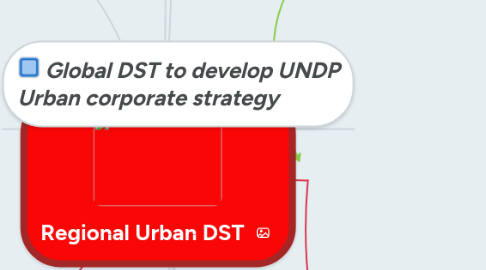
1. Country Offices
1.1. Afghanistan
1.2. Bangladesh
1.2.1. Urban Forum
1.3. Cambodia
1.4. China
1.4.1. Capacity Building
1.4.1.1. Disaster management
1.4.1.2. Low-carbon pilots (not yet funded)
1.4.1.3. Emissions public buses
1.4.1.4. Public participation in government performance review
1.4.2. Public Engagement
1.4.2.1. USCI Index/Awards
1.4.2.2. Sustainable communities prize challenge
1.4.3. Policy/Research
1.4.3.1. NHDR
1.4.3.2. CASS SU R/S project
1.4.3.3. Green blogs
1.4.3.4. Beyond Smart cities
1.4.3.5. low-carbon cities CCICED
1.5. India
1.6. Indonesia
1.7. Iran
1.8. Lao PDR
1.8.1. Quality of Investment, Jobs/employment, effective use of resources
1.8.2. Strengthen oversight function of political leader on emerging urban challenges
1.8.3. Adaptation to Climate Change
1.9. Malaysia
1.9.1. UVG - Urban Vulnerable Group
1.9.2. B50% Housing
1.9.3. Low-carbon cities
1.9.4. 11th Malaysia Plan (SEDL + EE)
1.9.5. Cultural Mapping
1.10. Mongolia
1.11. Nepal
1.11.1. Urban Development concept note
1.12. Philippines
1.13. Thailand
1.13.1. Environment
1.13.1.1. low-carbon city
1.13.1.2. GEF
1.13.1.3. DRR
1.13.2. Government and social advocacy:
1.13.2.1. participatory planning / livelihood, vulnerable group
1.13.2.2. Contribute to idea sepcial cities
1.13.2.3. Working in fragile areas (social cohesion)
1.13.2.4. Women empowerment
1.14. Vietnam
1.14.1. Multidimensional Poverty Reduction in Urban settings (HCMC)
1.14.2. Social Assistance project
1.14.3. Environment / DRR
1.14.3.1. Urban Disaster Risk Management
1.14.3.2. Migration and Climate Change Analysis
1.14.3.3. Green City Development
1.14.3.4. Urban Environmental challenges (e.g. Energy efficiency in certain industries, hazardous waste management)
1.14.3.5. Climate Change analyis and capacity building
2. Global DST to develop UNDP Urban corporate strategy
3. Asia pacific Urban strategy
4. Urban poor
4.1. SDI
4.1.1. Network of community-based organizations of the urban poor in 33 countries in Africa, Asia, and Latin America. This is a global platform to help local initiatives develop alternatives to evictions while also impacting on the global agenda for urban development. Started in 1996
4.2. WEIGO
4.2.1. Global network focused on securing livelihoods & increase the voice, visibility and validity of the working poor, especially women. Their work is mostly concentrated in 5 core programmes: organization 7 representation, statistics, global trade, social protection, urban policies, Founded in 1997
4.3. Orangi Pilot Project
4.3.1. Project carried out by 3 Pakistani NGOs involving the local residents in solving their own sanitation problems, using innovative methods to provide adequate low cost sanitation, health, housing and microfinance facilities. Initial project launched in the 1980s.
4.4. SEWA
4.4.1. Organisation of poor, self-employed women workers. Aims to organise women workers for full employment (meaning: employment whereby workers obtain work security, income security, food security and social security (at least health care, child care and shelter). Trade union registered in 1972
4.5. Solo Kota Kita
4.5.1. Developing tools for neighborhood advocacy and citizen planning in Surakarta (Solo), Central Java, Indonesia. Launched in MArch 2009
4.6. Sevanatha
4.6.1. Revitalize and enhance the capacities and creativity of urban and rural poor in Sri Lanka. Started in 1989
5. UNDG Guidelines for integrating urbanization at national level
6. 2013 Strategy and Action Plan
6.1. Challenge fund (not executed)
6.2. South-South exchange
6.3. Mapping methodology
7. UN-Habitat
7.1. Global agenda setting: Habitat III APUF - May 2015 in Bangkok (high level regional meeting) --> World Urban Forum ......
8. Inclusive Growth team
8.1. Urban Futures conference
8.2. Research papers
8.2.1. Iran
8.2.2. India
8.2.3. Mongolia
8.2.4. Philippines
8.3. Mapping in Cambodia
8.3.1. Regional HDR (Ageing)
8.3.2. ASEAN report on SDGs
9. Disaster Risk Reduction
9.1. Resilient Cities initiative with UN-Habitat and .... (seeking funding from RF)
10. UNDG
11. External organizations
11.1. Cities Alliance: Urban forums
11.2. Potential partners
11.3. ACCRN
11.4. Oxfam
11.5. Rockefeller Foundation
11.6. ACHR
11.7. Slum Dwellers International
12. Green cities
12.1. ADB
12.1.1. Green cities
12.1.1.1. Green City Action plans
12.1.1.2. Urban profiles
12.1.1.3. Investment and capacity development plans for new initiatives
12.2. World Bank
12.3. World Research Institute
12.4. USAID
12.4.1. City Links Programme
12.4.1.1. water and sanitation, Climate Change, and Food and Agriculture. (the latter two seem to focus more on poverty and vulnerability
12.4.1.2. “Low emissions, Climate Resilient Development”
12.4.1.3. North-South exchange: pairs US cities with developing cities
12.5. C40
12.5.1. Climate Change Risk Assessment Framework and Tool (CRAFT)
12.5.1.1. Taxonomy of city climate hazards to improve communication between global cities (& also local stakeholders such as businesses). Sharing challenges, opportunities and best practices, and providing a platform for joint problemsolving.
12.5.2. Our Connecting Delta Cities Network
12.5.2.1. Spatial dvt, water management and adaptation to support delta cities.
12.5.3. The Cool Cities Network
12.5.3.1. Mitigate the urban heat island effect by increasing the solar reflectance of buildings and pavements.
12.5.4. Climate Risk Assessment Network
12.5.4.1. Working with cities to build climate resilient cities through best practice understanding and prioritization of climate change risks
